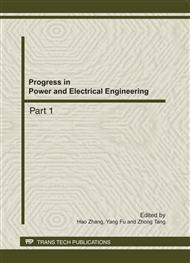p.478
p.483
p.488
p.492
p.499
p.504
p.508
p.513
p.518
Modeling Spray Formed by Spring Nozzle Using Volume-of-Fluid Method
Abstract:
Spring nozzles are widely used in deaerators. The spray issued from a spring nozzle was studied numerically with an adapted volume of fluid method combined with a continuous surface force model to capture the gas–liquid interface dynamics. The present analysis focuses on the formation of a water film and the generation of droplets near the spring nozzle outlet. The numerical simulation results show that the water film breaks up to droplets at the location 20~25cm from the nozzle exit vertically. The vortical structures are formed due to the interaction between the liquid film and the surrounding air, which leads to air recirculation and water film instability. When the inlet water velocity decreases from 5.33m/s to 4.1m/s, it results in a slightly reduced spray angle. But the vertical break up length is not obviously influenced. The water sheet disintegration is probably at the transition state between Rayleigh and first wind-induced breakup regimes.
Info:
Periodical:
Pages:
499-503
Citation:
Online since:
October 2011
Authors:
Price:
Сopyright:
© 2012 Trans Tech Publications Ltd. All Rights Reserved
Share:
Citation:


